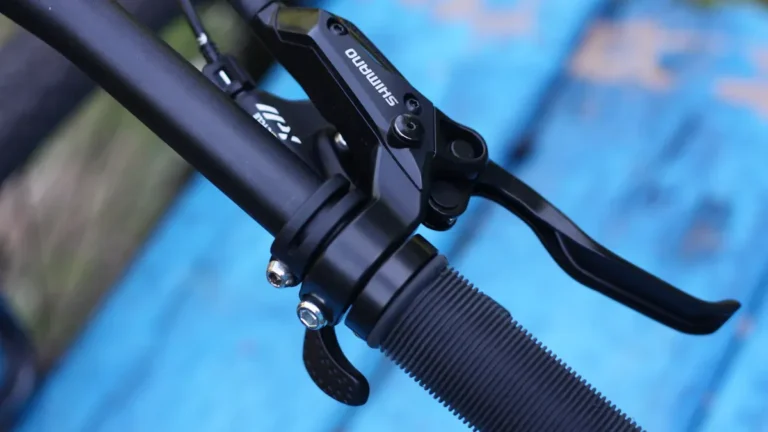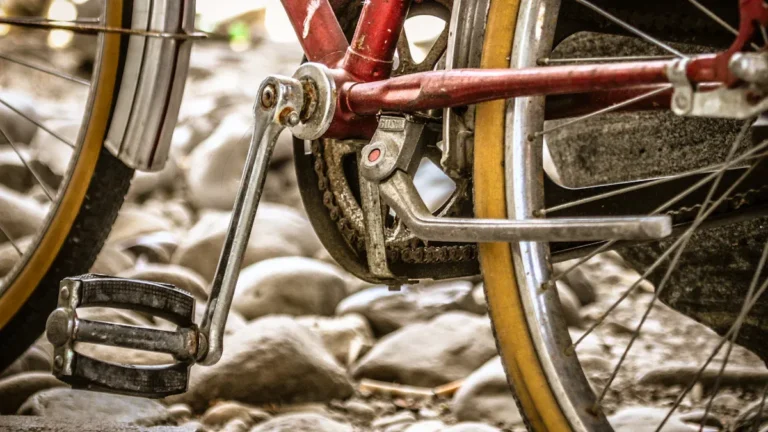Book Appointment Now
How to clean bike chain

Cleaning your bike chain is simple. You just grab your tools, apply degreaser or dish soap, scrub, rinse, dry, lubricate, and wipe off any excess to ensure you have a clean bike chain. You can use household items like Simple Green or Finish Line degreaser. Regular cleaning of your bike chain helps you avoid:
Faster chain wear
Stiff links
Extra drivetrain damage
Poor shifting
Key Takeaways
Regularly clean your bike chain to prevent wear and ensure smooth shifting. Aim for a full clean every 4 to 10 rides.
Use the right tools, like a chain cleaning device and degreaser, to make the cleaning process faster and less messy.
Always dry your chain after cleaning to avoid rust. Apply lubricant properly and wipe off excess to keep your chain clean and efficient.
Bike Chain Cleaning Tools

Essential Tools
You don’t need a fancy workshop to start cleaning bicycle chains. Most bike chain cleaning jobs only require a few basic items. Here’s what professional bike mechanics recommend:
Allen® wrench set (2-12mm)
Open end wrenches (6-17mm)
Chain brush
Chain cleaning tool
Chain lube and cleaner
Clean rags
Tire levers
Spare tubes
Tube patch kit
Floor pump with gauge
You can also grab a chain degreaser or a bike-specific degreaser for tough grime. If you want to go the extra mile, try an ultrasonic cleaner or mineral spirits for deep cleaning. A chain cleaning tool, especially the clip-on type, makes the process faster and less messy than using a regular brush. These tools use built-in brushes and a degreaser bath, so you get a cleaner chain with less effort.
Tip: A chain cleaning tool saves you time and keeps the mess contained. You’ll spend less time scrubbing and more time riding.
Preparation Steps
Before you start, get your bike ready. This helps protect your bike and makes cleaning easier. Here’s a simple checklist:
Wash the bike frame with warm soapy water. Avoid getting soap on brake rotors.
Decide if you want to clean the chain on the bike or take it off. On-bike cleaning is quicker, but off-bike cleaning gives a deeper clean.
Use a rag and degreaser for light dirt. For heavy grime, use a chain-cleaning device.
After cleaning, apply lube to the chain, brake levers, and cables.
Check and lubricate brake and derailleur assemblies.
Most riders spend about 10 to 20 minutes preparing their bike for chain cleaning after a ride. If you clean and lube the chain while it’s still warm, you’ll get better results.
Clean Bike Chain Steps

Apply Degreaser
Start by choosing your degreaser. You have a few great options for getting rid of tough grime on your bike chain:
Morgan Blue Chain Cleaner, Finish Line Citrus, Pedro’s Pig Juice, and Smoove Prep all work well for a clean finish.
Smoove Prep stands out for leaving your chain nearly spotless with no residue.
Pedro’s Pig Juice cuts through heavy grime and is safe for regular use.
If you want to use something from your kitchen, dish soap can help with light dirt. However, dish soap struggles with grease and oil. It also needs rinsing with water, which can leave moisture behind. Commercial degreasers like WD-40 clean bike chains more thoroughly and don’t need water, so you avoid leftover residue.
You can apply degreaser in two main ways:
For quick, regular chain cleaning, use a chain cleaning tool. Clip it onto your chain, fill it with degreaser, and backpedal to let the brushes do the work.
For deep cleaning, remove the chain and soak it in a jar of degreaser. Shake the jar to loosen stubborn grime. If you have an ultrasonic cleaner, you can use it for a hands-off, super-effective clean. This method reaches every nook and cranny, doesn’t damage the chain, and is eco-friendly.
Tip: On-bike cleaning is fast and easy for most people. Off-bike cleaning gives a deeper clean but takes more time and effort.
Scrub and Rinse
Now it’s time to scrub. Here’s a simple step-by-step guide:
Use a chain cleaning device with rotating brushes to scrub the inside and outside of the chain.
If you want better access, remove the rear wheel and cassette.
Clean the derailleur pulleys and cage with a rag.
For a really dirty chain, use a thin cog brush or shake the chain in a jar of degreaser.
If you use a water-based degreaser or dish soap, rinse the chain with water. Make sure you rinse off all the cleaner.
If you use a petroleum-based degreaser, skip the water rinse. Water can cause rust if the chain isn’t dried completely.
Note: An ultrasonic cleaner works well for deep cleaning. It cleans every part of the chain and doesn’t harm the metal or finish.
Dry and Lubricate
After cleaning the chain, you need to dry it right away. Use a clean rag to wipe off all moisture. You can also use compressed air if you have it. Make sure the chain is totally dry before you move on. Any leftover water can cause rust and mess up your lubrication.
Now, it’s time to clean and lube your bike chain. Pick the right lubricant for your riding conditions. Here’s a quick table to help you choose:
Lubricant Type | Best Conditions | Notes |
|---|---|---|
Wet Lubes | Wet conditions | Attracts grime but works well in rain or mud |
Dry Lubes | Dry conditions | Stays cleaner, but may wear off faster |
Grease | Varies | Sticky, attracts dirt, not ideal for most chains |
“If contamination was removed from the equation, increased friction does not always correlate to wear … For example, compare a newer-technology dry lubricant, such as (CeramicSpeed) UFO Drip, Molten Speed Wax, or (CeramicSpeed) UFO Chains versus a thick sticky grease. The dry lubricants, from an efficiency standpoint, will be much faster than the greased chain. However, the greased chain might show less wear over time.”
Apply a generous amount of lube to the chain. Make sure you get every link. Let the lube soak in for a few minutes.
Wipe Excess
After lubricating your chain, grab a clean rag. Hold it around the chain and backpedal. Wipe off any extra lube from the outside of the chain. You want the lube inside the links, not on the surface. Too much lube attracts dirt and grime, making your next clean bike chain job harder.
Here’s a quick process:
Apply lube to the chain.
Let it soak in.
Wipe off the excess with a rag.
Tip: Always wipe off extra lube. This keeps your chain cleaner and helps it last longer.
By following these steps, you can clean bike chain parts quickly or go for a deep clean when needed. On-bike cleaning is great for regular maintenance. Off-bike cleaning is best when you want your chain spotless. No matter which method you choose, cleaning the chain and lubricating your chain regularly will keep your bike running smoothly. When you clean and lube your bike chain, you get a quieter ride and a longer-lasting drivetrain.
Chain Cleaning Tips
Cleaning Frequency
You might wonder how often you should tackle chain cleaning. Most bike manufacturers suggest a regular schedule to keep your ride smooth. Here’s what works best:
Use dry lubes after every ride to rinse the chain.
Do a full chain cleaning every 4 to 10 rides, depending on how your chain feels.
Clean and lubricate the chain every 20 miles or after longer rides.
Go for a deeper clean every 10 rides.
Clean the chain every week to 10 days for top performance.
If you ride in wet or dirty conditions, you need to clean your chain more often. Mud and water wash away wet lubes, so you should clean and re-lube your chain before switching lubes or after a messy ride. This keeps your chain running smoothly and helps prevent wear.
Common Mistakes
Many cyclists make simple mistakes during chain cleaning. Avoid these pitfalls to keep your bike in great shape:
Not cleaning the bike chain leads to excessive wear and poor drivetrain performance.
Over-lubrication attracts dirt and debris, causing faster wear.
More lubricant does not prevent wear; it can lead to increased friction and dirt build-up.
Over-lubrication can cause dirt accumulation, which hurts chain performance.
Skipping the drying step can result in rust and corrosion. Always dry your chain after cleaning, using a rag or blower.
Applying lubricant on a damp chain reduces stickiness and proper function.
Using harsh chemicals like gasoline or acetone can damage chain components. Stick to bike-specific cleaners.
Forgetting to protect bike components during chain cleaning lets dirt act as an abrasive, increasing wear on the chain and cassette.
On-Bike vs. Off-Bike Cleaning
Method | When to Use | Pros | Cons |
|---|---|---|---|
On-Bike | Quick maintenance | Fast, less mess | Not as thorough |
Off-Bike | Deep cleaning | Cleans every link | Takes more time |
Choose the method that fits your needs. Regular chain cleaning keeps your bike running smoothly and helps you avoid costly repairs.
You keep your bike running smoothly when you clean your chain often.
Removing dirt and grit helps lube reach every part, which cuts down on wear.
A clean chain makes shifting easier and helps your cassette and chainrings last longer.
Regular care means safer, quieter, and more enjoyable rides every time.
FAQ
How often should you clean your bike chain?
You should clean your bike chain every 2–3 months. If you ride in rain or mud, clean it after each ride for best results.
Can you use household products to clean your bike chain?
Yes, you can use dish soap or Simple Green. Bike-specific degreasers work better for heavy grime, but household products help with light dirt.
What happens if you skip chain cleaning?
Your chain wears out faster. You might hear noise, feel rough shifting, and need expensive repairs sooner. Regular cleaning saves you money and trouble.



